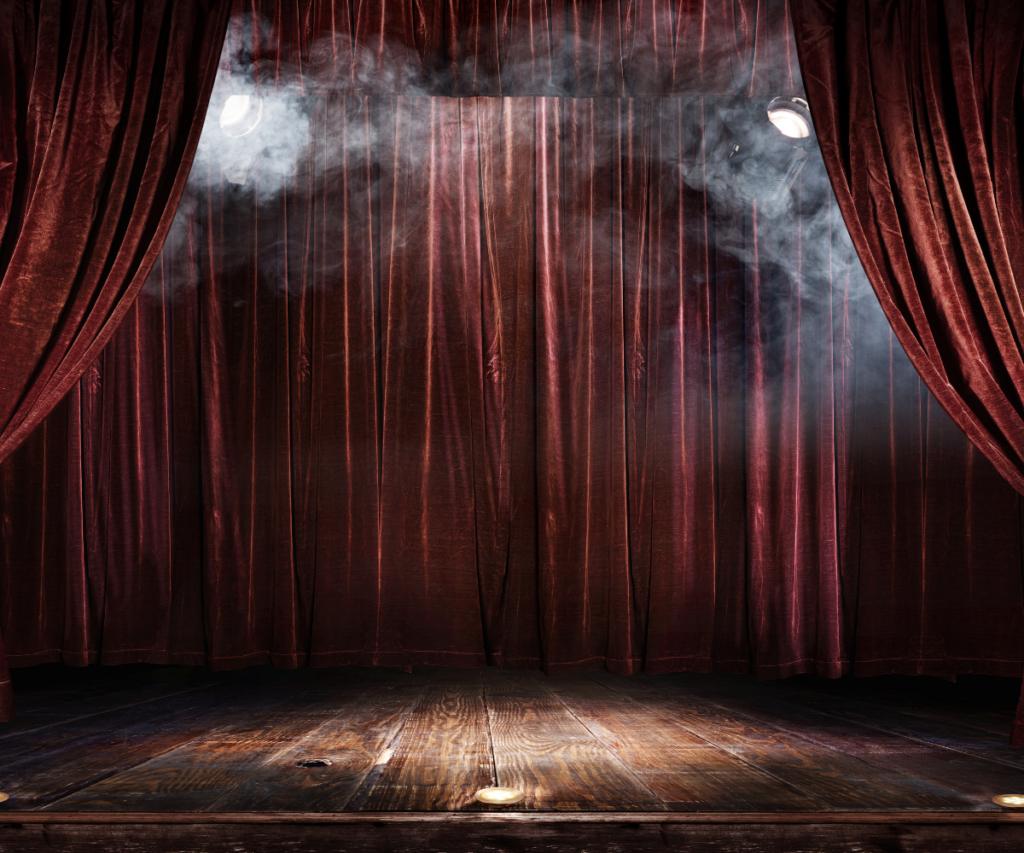It’s not only musical and theatrical performers who need an audience. All of us need to have an audience periodically. Somebody with whom we can share our joy and grief. Someone with whom we can express our concerns about things. Someone who can mirror our thoughts about different situations and who can help us develop points of view for dealing with them. Without such people in our lives, we are left without support and guidance for the decisions we have to make and the directions we want to take.
But just as the relationship between performers and audiences has changed over time, so has the relationship changed between people and those that they consider to be their support system. In both Ancient Greece and the times of Shakespeare, audiences interacted quite a bit with performers. In particular, if they didn’t like what they were seeing, they made a lot of noise and even threw fruit at the actors. If nothing else, the members of the audience showed that they were listening to the actors and they cared about what the actors were doing. The members of the audience didn’t just passively remain quiet and fall asleep, if they didn’t like what they were seeing.
And the performers interacted with the audience. The Greek chorus talked both to the audience and to the other actors. Many speeches in both Greek and Shakespearean plays by the individual actors were spoken with no other actors as direct recipients. Monologues, soliloquys, they were meant to convey the actor’s inner feelings and thoughts directly to the audience. There really was no fourth wall in these plays.
This idea of no fourth wall was further supported by the physical structure of the theaters themselves. Ancient Greek theater used both thrust stages and theater-in-the-round. Shakespearean theater used thrust stages. Both were designed to physically minimized the separation of actors and audiences.
In modern theater, actors and audiences are kept separate in multiple ways. In serious productions, audiences are expected to remain quiet and respectful, even when they don’t like the play. The plays themselves are constructed in such a way that, with few exceptions, actors talk only to other actors and keep up the fourth wall with the members of the audience. Finally, although there has been some experimentation with thrust stages and theaters-in-the-round, most plays are performed on proscenium stages where the stage is kept separate from the audience and curtains drop down when there is no action on the stage. The curtain really emphasizes the concept of the fourth wall.
Now the fourth wall can be thought of not only as a theatrical concept. If we were to conceive of the fourth wall as something that exists not only as a live theater notion but also as a notion applicable to movies and television programs, then we can say that such relationships of performer and audience may also reflect how emotionally close ordinary people today can get to one another. The very fact that there are so many screen performances to choose from today and that they can be found very easily on screen media, means that the minimal separation between screen images of humans and external world entities of humans begins to infuse live humans and affect their fundamental attitudes of psychological distancing independent of any social distancing concerns related to Covid. Screen images of humans begin to become basic models for the kind of social separation that increasingly exists in the lives of people in modern technological society. Just as more traditional theater forms such as those found in Ancient Greece and Shakespeare’s times reflect a model for human interaction that has more immediacy. We can think of the developing of theatrical forms as a flow from a highly interactive traditional theater through to playwrights like Moliere, Chekov, Ibsen, Shaw and O’Neill where the theater is live but the fourth wall is in place to modern screen media dramatic presentations where the fourth wall is in place for the performers even after the show is over. Audience members can’t go up to the performers after a movie is over to congratulate them.
The question is do people communicate with a kind of fourth wall between them as a result of all the mediation that occurs not only from the dramatic narratives they view on screen media but now as a result of the new application of screen media, namely screen media real time interactions between people on Zoom, Face Time, Skype and WhatsApp. I would say that we are all carrying around with us a kind of fourth wall that has leached over into our minds as a result of our increasing use of screen media real time interactions in our daily lives. This fourth wall means we are primarily performing rather than communing with the people with whom we are interacting. It prevents us from having the intimacy we require in order to feel fully alive. It prevents us from transmitting and receiving the organic imprints that deal with real life issues that are important not only for feeling alive, but also for preparing for death.
Shakespeare once said in one of his plays that “All the world’s a stage, And all the men and women merely players”. Perhaps this observation is true now more than ever.


























